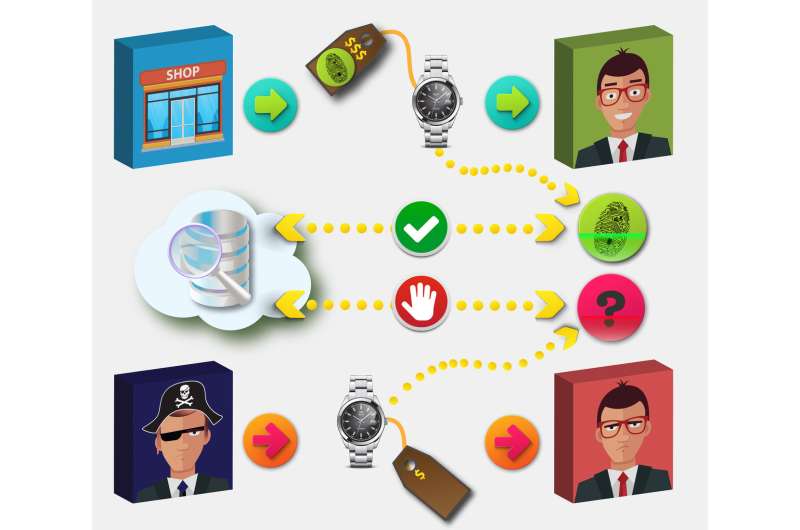Researchers at the University of Copenhagen have developed an optical fingerprint that can be affixed to all products and used to guarantee authenticity. Credit: Mr. and Mrs. Arppe-Tabbara
Researchers at the University of Copenhagen have developed the world's most secure marking system for combating pirated goods, including pirated pharmaceuticals, food, designer merchandise and artwork. The system could be on the market within a year, and because the markings are random, it cannot be hacked. The results have just been published in Science Advances.
Companies around the world suffer significant economic losses due to counterfeited goods made by pirate manufacturers for whom international patents are of no concern. Piracy can put people's lives at risk, for example, the selling of dangerous and counterfeit medications online.
However, tough times are on the horizon for pirates, according to four researchers from the University of Copenhagen's Nano Science Center. They have developed a system that researcher Thomas Just Sørensen calls "the safest in the world," when it comes to clamping down on all types of pirate manufacturing. "The system, which deploys three rare earth metals, among other things, is based on randomness, which makes it unhackable. As soon as a customer asks an authorized dealer to check up on a piece of merchandise marked using the system, an expensive wrist watch for example, the dealer can access a manufacturer database to check its authenticity."
The probability of two products having the same fingerprint—i.e., the same digital key—is so minuscule that in practice, it can only be described as non-existent, explains Sørensen. "It corresponds to a one in 6104 chance."
Can be on the market in a year
The University of Copenhagen has patented the marking system, and it is expected to be on the market in roughly a year. Researchers are currently fine-tuning scanning solutions to ready the system for manufacturers. Sørensen says, "We estimate that it will take approximately one year, at which point we will be very close to putting a commercial version on the market."
The researchers estimate that the cost of marking products will be modest, probably not much more than one Danish krone. Additional expenses from the data systems have yet to be fully estimated.
More information: M.R. Carro-Temboury el al., "An optical authentication system based on imaging of excitation-selected lanthanide luminescence," Science Advances (2018). advances.sciencemag.org/content/4/1/e1701384
Journal information: Science Advances
Provided by University of Copenhagen























